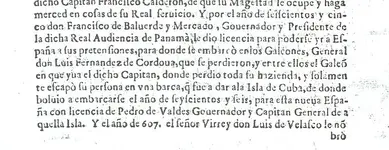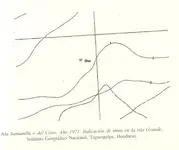Re: About the San Roque 1605's Tierra Firme armada.
Panfilo, more than lying Zacarias was afraid. To be pirate and heretic took to the fork. In the first declarations in Trujillo, several witness said that Zacarias was voluntarily with the Spaniards, escaping from the Englishmen (in certain way, these Spaniards defend it). Undoubtedly that he said to know the whereabouts of a rich galleon and a buried treasure, it was a reason so that it continued alive.
Another indication is the fact that he affirms to have navigated with the general Luis Fajardo's armada in 1601. That's true, because his fleet returned from Indies in 1602 (page 81 of my book).
Already tired of looking for the island and crossing out Zacarias as a liar (but never losing the hope that the story was genuine), finally Zacarias is free. If the Spanish authorities of Guatemala left him free this means that they continued believing in that story, in another way they had executed him for pirate and heretic.
About the Bay of Asunción, Francisco Núñez Melian, the fortunate that recovered part of the Santa Margarita 1622 lost galleon, he received a letter fron Juan Contreras warned that in this bay there was a galleon to try to recover the cargo. In another writing it is not discarded that it is one of those that got lost in 1605. Later on I looked for more information, but I have not been able to find nothing else about this shipwreck.
In 1996 I traveled to Mexico and indeed, a fisherman of the place told me that he had news of a "galleon" lost in the bay.
To complete the "mystery" of the Mysterious island and 1605's galleons, in 1629, the captain Francisco Calderón, when requesting a grace says that coming embarked in one of the galleons of the fleet of Luis Fernandez de Cordoba, it shipwrecked losing all his money and surviving with a boat, where it reached the island of Cuba.
This is the only existent news of a survivor of the four missing galleons. Zacarias surprisingly also says that after having been gone of the island of the treasure with the other two French, they arrived in Cuba, where it was captured by English pirates.
I'm sorry to mistreat the beautiful English language in my messages.





